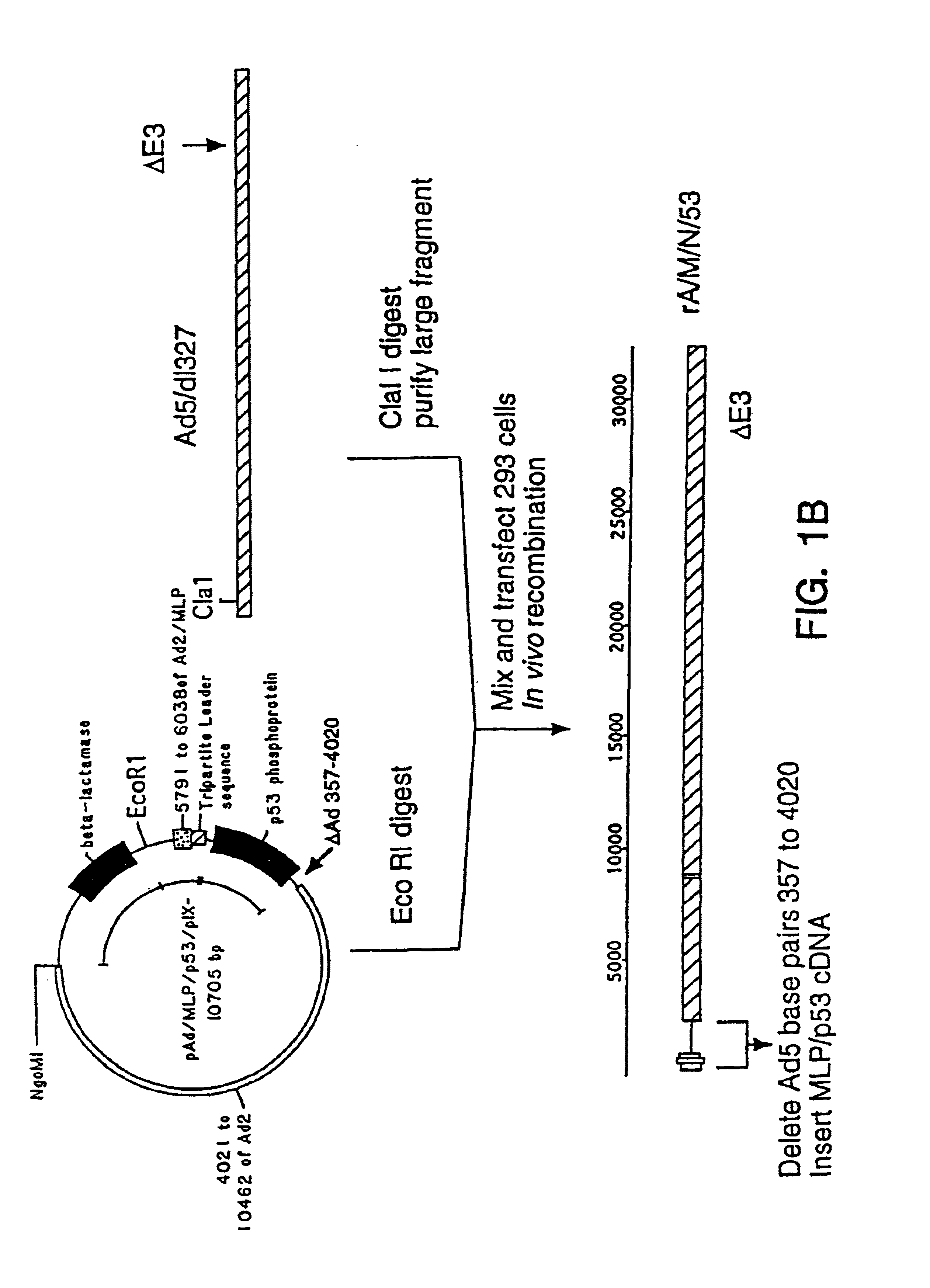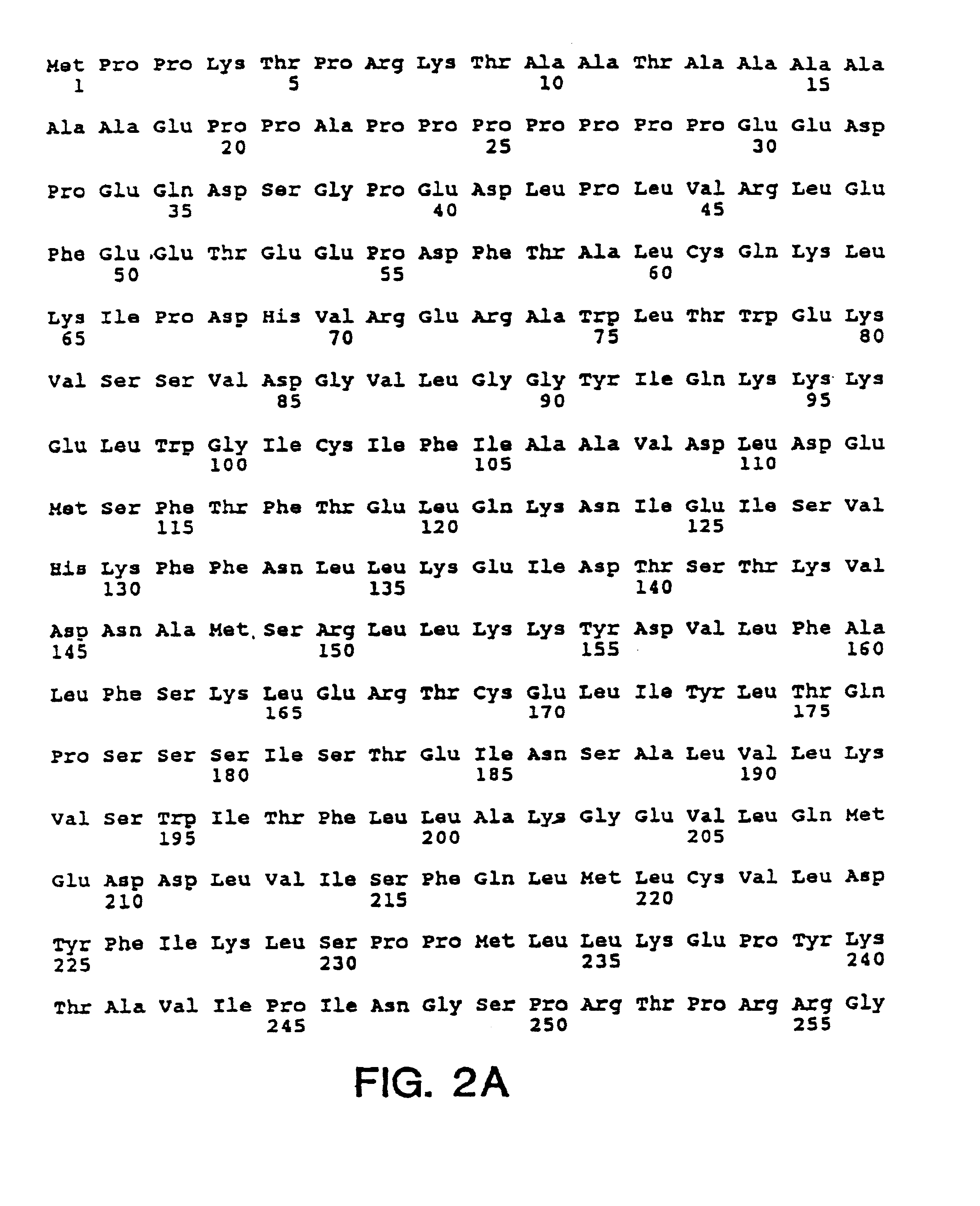Recombinant adenoviral vector and method of use
a technology of adenovirus and adenovirus, which is applied in the field of recombinant adenovirus and method of use, can solve the problems of difficulty in providing non-contaminated recombinant preparations, the probability of any single lot being contaminated with a wild-type virus also rising, and the use of retroviral vectors with little success
- Summary
- Abstract
- Description
- Claims
- Application Information
AI Technical Summary
Benefits of technology
Problems solved by technology
Method used
Image
Examples
Embodiment Construction
[0028]To reduce the frequency of contamination with wild-type adenovirus, it is desirable to improve either the virus or the cell line to reduce the probability of recombination. For example, an adenovirus from a group with low homology to the group C viruses could be used to engineer recombinant viruses with little propensity for recombination with the Ads sequences in 293 cells. However, an alternative, easier means of reducing the recombination between viral and cellular sequences is to increase the size of the deletion in the recombinant virus and thereby reduce the extent of shared sequence between it and the Ad5 genes in the 293 cells.
[0029]Deletions which extend past 3.5 kb from the 5′ end of the adenoviral genome affect the gene for adenoviral protein IX and have not been considered desirable in adenoviral vectors (see below).
[0030]The protein IX gene of the adenoviruses encodes a minor component of the outer adenoviral capsid which stabilizes the group-of-nine hexons which ...
PUM
| Property | Measurement | Unit |
|---|---|---|
| volume | aaaaa | aaaaa |
| total volume | aaaaa | aaaaa |
| volumes | aaaaa | aaaaa |
Abstract
Description
Claims
Application Information
 Login to View More
Login to View More - R&D
- Intellectual Property
- Life Sciences
- Materials
- Tech Scout
- Unparalleled Data Quality
- Higher Quality Content
- 60% Fewer Hallucinations
Browse by: Latest US Patents, China's latest patents, Technical Efficacy Thesaurus, Application Domain, Technology Topic, Popular Technical Reports.
© 2025 PatSnap. All rights reserved.Legal|Privacy policy|Modern Slavery Act Transparency Statement|Sitemap|About US| Contact US: help@patsnap.com



